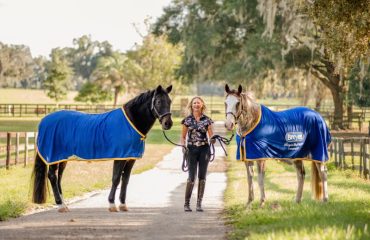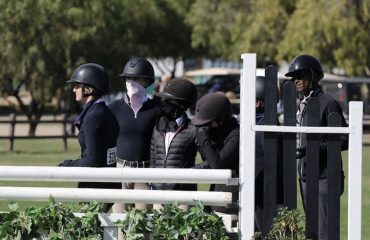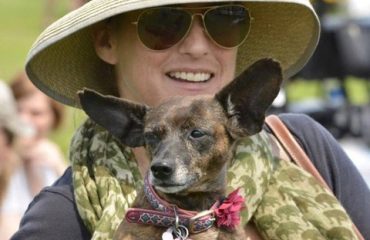By George Williams
So, here’s the question: If you’re a professional, do you consider yourself a trainer? Or are you a coach, or an instructor? Or both? Or all three? These three terms have a tendency to be treated as all the same thing. In my opinion, they are not the same. The USEF has its own definition of a “trainer” and “coach.” If you compete, it’s important you read and understand their definitions as spelled out in the USEF Rule Book.
As dressage is based on principles developed and refined literally over centuries, it requires good instructors who can pass on their knowledge from one generation to the next. And, with each generation, the knowledge constantly increases, primarily due to advances in veterinary medicine, technology, breeding and enlightenment, and therefore continually refines those core principles.
When you compete, it’s wise to have a good coach. All the top riders have a coach — someone with a skill set that can help you achieve peak performance in the competition arena both mentally and physically.
Training, however, is not only about competition. In one sense, everyone who rides is a trainer. Whether you’re an amateur or a professional, every time you ride, for better or worse, you are training the horse. In dressage, training is about the process. It’s about the physical and mental development of a horse as an athlete and a dance partner. By following the fundamental principles of dressage, our aim and responsibility should be to minimize the natural increase of physical stress placed on the body that comes with any athletic endeavor. Along with developing the horse physically, a good trainer brings out a horse’s personality, gives them confidence through understanding what’s expected of them, and strives to have them content and willing to do their job. There’s a difference between knowing your job and liking your job, and that should be the case with the horse, as well. He should like his job.
When I worked on a large breeding and training farm alongside my principal mentor, each autumn he would always choose the most unlikely prospect as a 3 ½-year-old to add to his training string. He loved bringing them along. He saw it as a true test of his training abilities. In the end, did they become horses that would be highly competitive on the global scene? No, but they sure as heck were fun to ride through the Grand Prix movements and they were great teachers.
Dressage is similar to skiing, the only other sport I’ve done with any degree of competency. In both sports, you have those who are competitors and those who are enthusiasts. In skiing, they refer to the second group as “recreational skiers,” a slightly demeaning term in my opinion. I refuse to use it to describe our avid dressage riders who are not focused on competition. In both sports, there are many highly proficient participants who have simply chosen not to compete. The competition arena may be our one formal proving ground, but good dressage shouldn’t be only about the ribbons. There are many good trainers who are not competing.
About 25 years ago, a top international rider told me how many horses he had ridden (it was something like 939 and he was very precise about that exact number). As he spoke, I was remembering that I had a boyhood friend in New Hampshire who, one summer, said he was going to keep track of how many mosquitoes he killed. In the end, in either case, how can one keep track of all of them? After a lifetime, it’s a lot of horses. And, if one learns just one thing from each horse…? Well, that’s a lot of learning!
Based on experience, a good trainer knows when to push and when to ease off. A good trainer knows how to build muscling and suppleness. But perhaps most importantly, a good trainer knows how and is able to use correct aids and exercises to show a horse how to use their body in a way that they are able to do what is asked of them, whether it’s a half pass, flying change, pirouette or a transition to piaffe.
We have to keep in mind that not every horse can be a Valegro or Totilas. But it’s still a trainer’s job to bring out a horse’s full potential. In the back of my mind, I always wonder how the dramatic improvement in the quality of horses being bred for dressage and appearing to be born as flying change machines, knowing how to carry themselves in balance and on the bit with an innate ability for piaffe and passage will influence training in the future. Don’t get me wrong, it’s not that top horses don’t have their training challenges; if nothing else, I’m sure they all have oversized personalities. Most likely they present other challenges as well. However, long term, will it affect the need for trainers to have toolboxes that are full of exercises and techniques developed over years of experience? Or will they simply be full of new and different tools?
In the end, one of the most addicting attributes of our sport is that if you keep an open mind, you never stop learning no matter how many horses you’ve ridden.
Photo by Ruby Tevis













